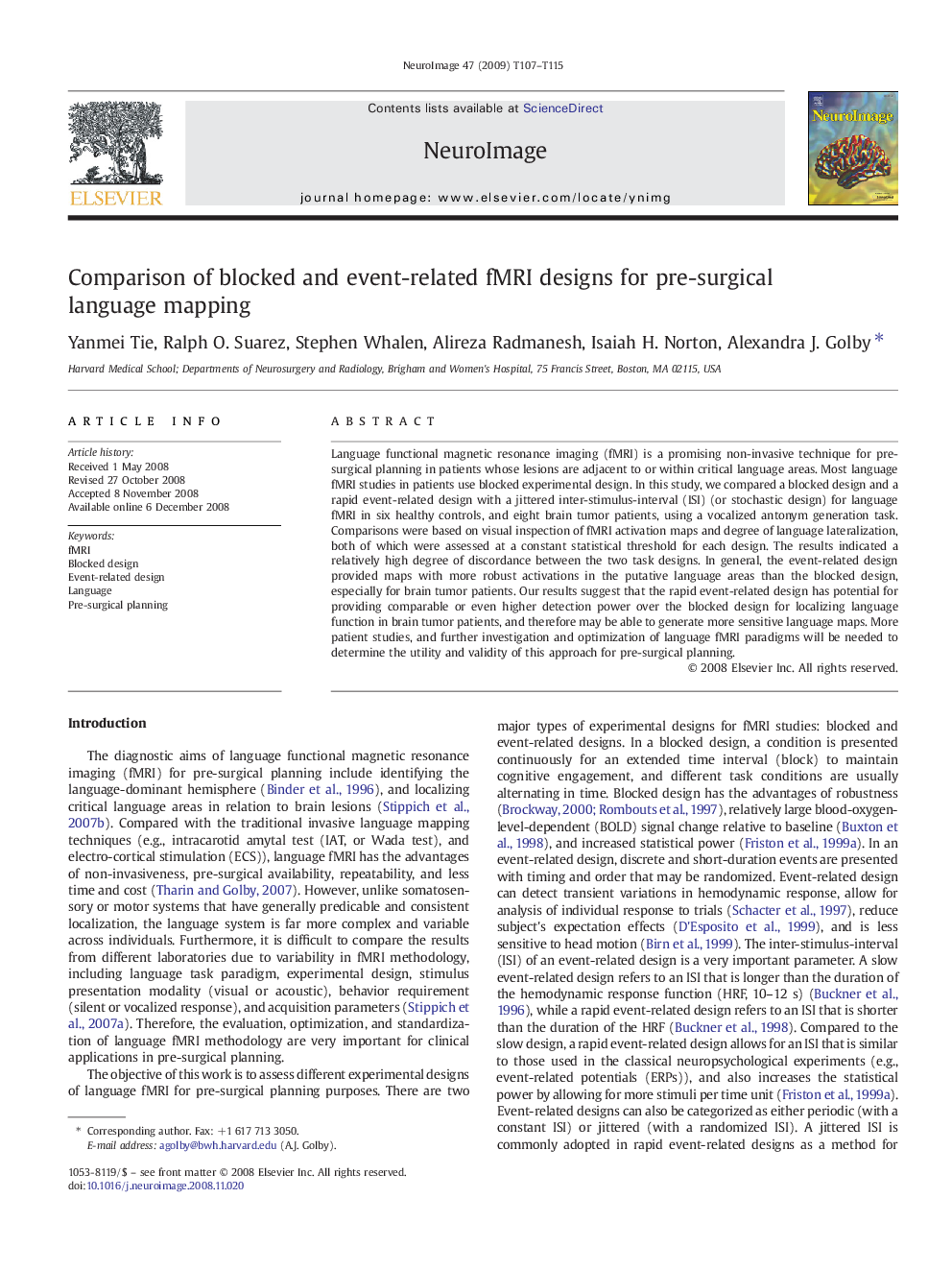| Article ID | Journal | Published Year | Pages | File Type |
|---|---|---|---|---|
| 3072863 | NeuroImage | 2009 | 9 Pages |
Language functional magnetic resonance imaging (fMRI) is a promising non-invasive technique for pre-surgical planning in patients whose lesions are adjacent to or within critical language areas. Most language fMRI studies in patients use blocked experimental design. In this study, we compared a blocked design and a rapid event-related design with a jittered inter-stimulus-interval (ISI) (or stochastic design) for language fMRI in six healthy controls, and eight brain tumor patients, using a vocalized antonym generation task. Comparisons were based on visual inspection of fMRI activation maps and degree of language lateralization, both of which were assessed at a constant statistical threshold for each design. The results indicated a relatively high degree of discordance between the two task designs. In general, the event-related design provided maps with more robust activations in the putative language areas than the blocked design, especially for brain tumor patients. Our results suggest that the rapid event-related design has potential for providing comparable or even higher detection power over the blocked design for localizing language function in brain tumor patients, and therefore may be able to generate more sensitive language maps. More patient studies, and further investigation and optimization of language fMRI paradigms will be needed to determine the utility and validity of this approach for pre-surgical planning.
